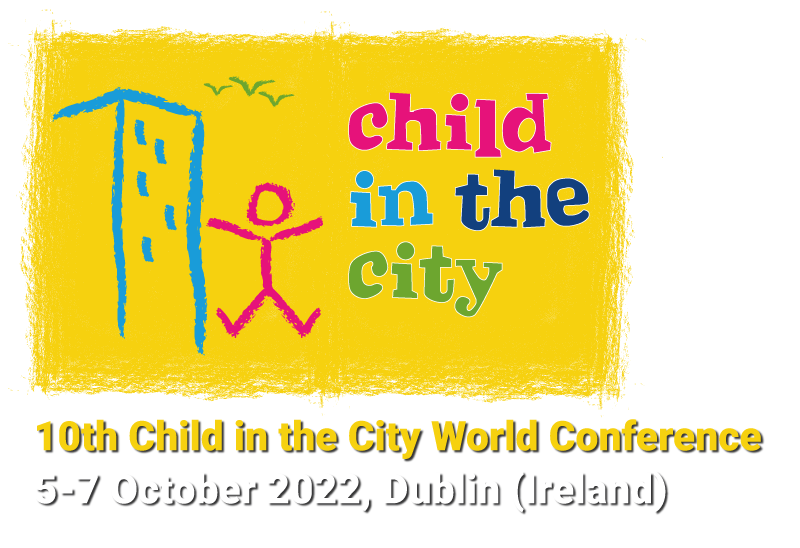Parallel session 5.1: Connecting children’s participation to urban policies
Friday, 7th October 09.30 – 11.00, Courtyard Room in Printworks Conference Centre at Dublin Castle
 Participatory Map Making: How fun and creative project can foster more participation in local policy
Participatory Map Making: How fun and creative project can foster more participation in local policy
Naomi Eiro, Cultural Educator and Coordinator at Kannerbureau Wooltz, Luxembourg
At Kannerbureau Wooltz (Children’s Office of Wiltz) we design and implement a wide range of participatory projects on a local, regional, and national level. One of our core missions is to anker children’s participation not only at an educational level within schools and nonformal learning institutions but also on a social and political level. We consider children not only to be fully fledged citizens but also as experts of their own realities. As such Kannerbureau Wooltz strives for a lasting change in which policy making, especially that which concerns decisions directly impacting children’s everyday lives, is in fact made more participatory and child-friendly. From 2019 to 2020 Kannerbureau Wooltz produced a map of Wiltz with and for children. At the 10th Child in the City World Conference we will share with you the participatory map-making process which relied on different creative methods and fostered dialogues between children and local agents. During its implementation we ran into a number of obstacles, showing us yet again where participatory methods run into barriers created by “the real world”. It is exactly this process of trial and error which motivates us to search for new ways to foster participation and we would love to share our experiences and insights.
 This Must Be the Place
This Must Be the Place
Michaela Freeman, Curator and Project Manager of “This Must Be the Place” project at Cement Fields, United Kingdom
As the first new Garden City for 100 years, the plans for Ebbsfleet Garden City are formidable, creating up to 15,000 new homes, 30,000 jobs, nine new schools, and seven new city-scale parks, in North Kent by 2035. Based on the ambitious and egalitarian principles of the Garden City Movement by Ebenezer Howard, this is a city designed for the future, promising to provide greener and higher quality of living, and to respect and fulfil the needs of new generations. How do we find out what these needs are however, and how do we allow their voices in as early as possible, before the plans are drawn and submitted? How can they feel they are part of the process right from the start and make a genuine difference? Cement Fields have developed This Must Be the Place, a series of innovative and radical placemaking programmes for local young people aged 15-24 years, inviting them to be part of the conceptual as well as detailed city planning, designing the public spaces that matter to them. Using extensive research, partnerships, artists residencies, and co-commissions created collaboratively with young people, this three-year programme provides a useful case study and learning hub for architects, developers, and designers, helping them to embark on their own co-design projects. Our conference contribution will be co-delivered by Precious Othieno, one of our programme’s young participants, to present it as seen through her eyes.
 Utopia or the Company Store? Opportunities and challenges for children in proposed purpose-built high-tech cities
Utopia or the Company Store? Opportunities and challenges for children in proposed purpose-built high-tech cities
Patrick Meehan, Northumbria University, United Kingdom
As global concerns rise about the liveability and sustainability of existing cities and supply chains, there is a new kind of city being planned and constructed in several global locations. These cities are greenfield projects, designed from the outset as smart cities, to become hubs of technological innovation. They represent significant public and private capital investment in planning, constructing, and maintaining their infrastructure to maximise liveability, sustainability and economic growth. Such artificial environments are not necessarily new forms of urban development, and successful historical examples of such cities can be found in classical Alexandria, medieval Lübeck, the factories of the Netherlands and British East India companies, and in contemporary Singapore and the United Arab Emirates. Where these new cities differ from the more famous examples of deliberate urban master planning such as Washington DC, Canberra, and Brasilia, is that their focus is primarily the pursuit of commercial enterprises rather than the creation of an administrative centre for national government. Consequently, the population composition, land use types, and primary activities will be quite different and will be much more focused on commercial concerns, but this need not automatically be a bad thing as historical examples attest. Obviously, the creation of these cities represents a series of expensive, long-term decisions by the nation or corporations responsible and as such it is expected that they will have a very strong focus on the creation of orderly, prosperous, and pleasant communities. This presentation will examine the potential challenges and opportunities which such cities present for children and families.
